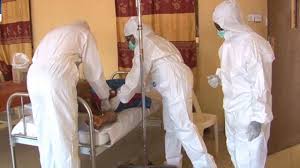A claim has been circulating on social media, alleging that a student in Kogi State died as a result of haemorrhagic fever. The claim originated from a post by a user named @LagosEbira_Girl on April 7, 2024. The post raised an alarm about an alleged hemorrhagic fever outbreak in Lokoja, Kogi State. The user reported the tragic death of a student due to the disease and expressed uncertainty about its nature.
The post partly read, “Looks like there’s a disease outbreak here in Lokoja. Lost a student yesterday to ‘Haemorrhagic fever’. Don’t know what that is, but other people who were in contact with the deceased in the last 21 days are going to be kept in the isolation centre. May his soul rest in peace.”
According to the World Health Organization (WHO). Lassa fever is an acute viral haemorrhagic illness that lasts between 2 to 21 days and primarily occurs in West Africa. The disease is caused by the Lassa virus, a single-stranded RNA virus belonging to the Arenaviridae family.
The virus causing Lassa disease was first identified in 1969, although the disease was initially described in the 1950s. The primary host of the Lassa virus is a rodent of the genus Mastomys, commonly known as the “multimammate rat”. Humans usually become infected with Lassa virus through exposure to food or household items contaminated with urine or faeces of infected Mastomys rats.
About 80 percent of people who become infected with Lassa virus have no symptoms. However, 1 in 5 infections result in severe disease, where the virus affects several organs such as the liver, spleen, and kidneys¹. Symptoms of Lassa fever include fever, general weakness, malaise, headache, sore throat, muscle pain, chest pain, nausea, vomiting, diarrhea, cough, and abdominal pai. In severe cases, facial swelling, fluid in the lung cavity, bleeding from the mouth, nose, vagina or gastrointestinal tract, and low blood pressure may develop. Early supportive care with rehydration and symptomatic treatment improves survival.
Lassa fever is known to be endemic in Benin, Ghana, Guinea, Liberia, Mali, Sierra Leone, and Nigeria, but probably exists in other West African countries as well. It is estimated that about 100,000 to 300,000 infections of Lassa fever occur annually, with about 5,000 deaths. When the presence of the disease is confirmed in a community, prompt isolation of affected patients, good infection prevention and control practices, and rigorous contact tracing can stop outbreaks.
However, investigation by the Explainer Fact Checkers showed that the information was speculative. @LagosEbira_Girl, who posted the original video, later clarified that the reported case of Lassa Fever was not confirmed, indicating that the information was pending official test results.
To debunk the claim, Dr. Abdulazeez Adeiza, the Kogi State Commissioner for Health, said it was not true that there is a Lassa fever outbreak in the State. He clarified that the deceased student’s case had tested negative for Lassa fever. The patient had presented symptoms of fever and bleeding from the gum, but further investigation revealed a negative result for Lassa fever.
This denial was echoed by several reputable news outlets, including The Explainer further discrediting the viral claims.
VERDICT: MISLEADING
Explainer fact-checkers findings reveal that the student did not die o haemorrhagic fever as claimed. Tests conducted came back negative for Lassa fever.

























